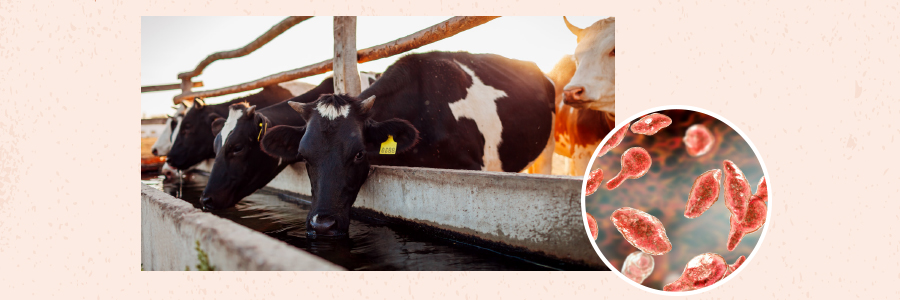


Sign-up for {N}power to get exclusive discounts, newsletters, members-only features, and more!

If the dust from a feedlot packed with 45,000 cows isn’t seeping through your windows, and the stench of manure from swine farms crowded with 5,000-plus hogs isn’t overwhelming you when you step outside, perhaps how our industrialized farming system produces animal-based foods feels unimportant.1 2 3 But if that dust and manure fuel a crisis of drug-resistant superbugs, does it matter then?
Antimicrobial resistance (AMR), in which pathogens evolve so that antibiotic, antiviral, antifungal, or antiparasitic treatments are no longer effective, is on the rise.4 The World Health Organization (WHO) considers it one of the top 10 threats to global health, and, if left unchecked, the annual death toll could reach 10 million by 2050, according to a new report from the United Nations Environment Program. The three industries “profoundly influencing” its evolution and environmental spread are pharmaceuticals, healthcare, and agriculture.5
Consider concentrated animal feeding operations (CAFOs)—the agricultural model dominating the production of ingredients for that bacon cheeseburger.6 In this model, low doses of antibiotics—the most prescribed antimicrobials in hospitals worldwide—are routinely administered in the feed and water of animals.7 And it’s not to heal infections but to prevent those that haven’t happened yet8 9 because unsanitary, overcrowded, stress-inducing conditions and poor nutrition define the status quo of CAFOs. Consequently, producers rely on this practice to counteract circumstances that make diseases more likely.10 11 12 13
There is a significant overlap between the classes of antibiotics used in animal agriculture and those considered important for human medicine, making their overuse even more perilous.14 15 An estimated 73 percent of medically important antibiotics sold worldwide are for livestock production, according to a 2022 Natural Resources Defense Council (NRDC) issue brief.

The 2022 NRDC analysis found that in 2015, almost three times more medically important antibiotics were sold for livestock than human medicine in the U.S. Then, in 2017, the FDA banned antibiotics as growth promoters while still allowing their non-therapeutic use as disease prevention, with veterinary oversight—a practice the WHO’s guidelines advise against and that the European Union banned (with few exceptions) in 2022. Did the regulation help? The expert consensus says not enough.16 17 In 2019 almost twice as many medically important antibiotics were sold for livestock than humans. And the cattle, swine, and turkey industries used antibiotics more intensely in 2020 than in 2017, with cattle and swine combined accounting for 82 percent of medically important antibiotic sales for livestock that year.18
Our daily lives may happen far from feedlot dust and the stench of swine manure, but the routes of AMR exposure aren’t so distant. CAFO pollution to soil, water, and air, contaminated meat, and even fresh produce exposed to contaminated water or manure are critical points of environmental spread.19 In 2017, 20 percent of Salmonella and roughly 22 percent of E. coli bacteria found on supermarket ground beef were tetracycline resistant (tetracycline is a common antibiotic used to treat a variety of bacterial infections in humans). And a 2018-2019 multi-drug-resistant strain of Salmonella, causing infections in 32 states, was identical to a strain isolated from Texas beef-packing plants.20 As long as the non-therapeutic use of medically important antibiotics is widespread in animal agriculture, the risk of exposure for humans will increase.21
The short answer is no. Regenerative organic agriculture depends on the symbiotic relationships between livestock, soil, and plants to increase soil’s microbial diversity—a natural defense against AMR—so animals raised in these systems don’t require antibiotics, unless they are actually sick.22 23 24 The menu is our choice—choose today for what matters tomorrow.



Sign-up for {N}power to get exclusive discounts, newsletters, members-only features, and more!